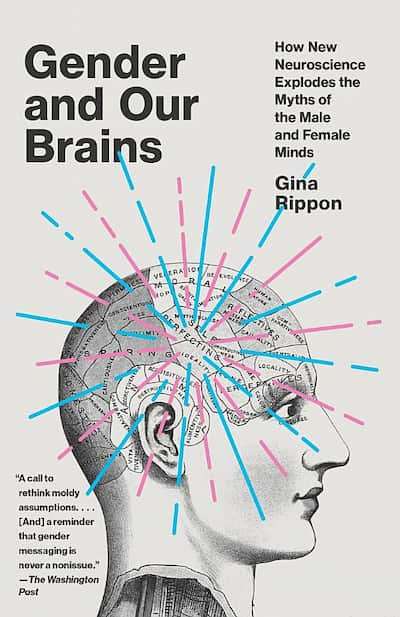The takeaway: 19th century biological essentialism is bunk (duh), and the majority of crappy research in neurology and biology has been undertaken to prove that women are inferior (yay!). We don’t even know what we don’t know, because the pseudoscience myths we’ve inherited will NOT die; but it’s a gendered world that produces a gendered brain, not our biology.
Raw notes ⚭
- Whack a mole myths
- A gendered world will produce a gendered brain
- 19th century biological essentialism: no stone unturned (or skull unexamined) in the hunt for the proof of women’s inferiority
- Gender distortions and appalling racism interlinked
- “Complementarianism” is rooted in 18th century philosophy that justifies unequal distribution of rights (Rousseau)
- Getting “Steinached” in the 1920’s
- PMS: a western myth and self-fulfilling prophecy? cf: disgust is a culture-bound syndrome
- The menstrual distress questionnaire: individuals who had never menstruated were indistinguishable from those who had
- No focus on the positive behavioral changes and improved cognition, cf. The Woman in the Body
- Behaviorism: a school of thought based on the idea that it’s not only appropriate but perfectly acceptable to extrapolate from animal to human behavior
- Complementarianism linked to evolutionary theory and then used as justification for existing social hierarchies (moral dumbfounding is not moral reasoning?)
- “Evolutionary psychologists come firmly under the heading of scientists-as-explainers-of-the-status-quo.”
- “Sex difference” studies reflect a biased perspective, preexisting beliefs, foregone conclusions, and misrepresented findings
- Patterns of behavior are rarely stable but will change according to external circumstances; if what your participants do and say change when someone else is present, then the pattern of behavior cannot be interpreted as innate, fixed, or hardwired
- A statistical “difference” still generates scores around the average, and shows more overlap and similarity than useful or meaningful difference
- The effect size of height differences in men and women is quite large and significant: 2.0, so the means are different, and about 98% of the taller group will be above the average height for the smaller group, with a overlap of about 30%. Most of the published sex differences have an effect size of 0.2–0.3, which means a overlap of nearly 90%. Even a moderate effect size, 0.5, means an overlap just over 80%.
- If studies don’t report effect sizes, alarm bells should ring
- Neurotrash and neurohype—research applied out of context to create dramatic headlines, push thinly veiled ideological arguments, or support particular policy agendas
- Mary Wollstonecraft: “What a weak barrier is truth when it stands in the way of an hypothesis!”
- Lifelong plasticity—brains reflect the lives they have lived, not just the sex of their owners (cf. our sense of the erotic is more plastic than we think)
- The social brain network has some of the evolutionarily oldest parts of our brain as well as the very newest
- Even when our brain is at rest, our “self” networks are active
- Our “self” and “other” identity responses—the groups that we feel we belong to are closely tied to our personal identity, which means how these groups are perceived is entangled with our own view of ourselves
- In the 80s and 90s, gendered toys were actively challenged, but that has mostly reversed—partly due to the deregulation of children’s television so it could be commercialized and used as marketing opportunities
- There was still a whiff of sexism, but overall, the involvement of women in science was not seen as problematic in the 17th and 18th centuries. The rise of “essentialist” movements in the 19th century changed that
- The term “scientist” was first publicly coined to describe a woman, the Scottish polymath Mary Somerville
- It was William James who described personality as being “set like plaster” by 30 (that’s incorrect)
- Comparing two groups assumes there are two groups in the first place
- The more we look at all sorts of different measures from males and females, from fundamental biology through brain characteristics to behavior and personality profiles, the less and less likely it looks like these measures are coming from two reliably distinguishable groups of people.
